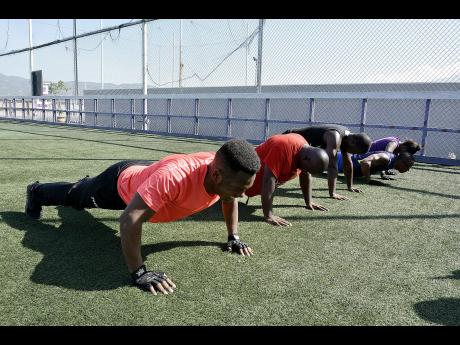Fit 4 Life | Planks 101: the good and the bad
In recent years, planks have become the go-to core exercise. Everyone is recommending them, and the simple form and that weird easy-yet-challenging feel mean that everyone – from beginner to professional – is planking.
Planks are so popular these days that there are too many variations for any coach to remember. But is this exercise worth your time?
A plank is an isometric exercise that hits the core hard. The shoulders and legs also take a beating during the workout.
The benefits are great: the exercise strengthens and boosts endurance in the target muscles while improving the stability of the core and shoulders. Also, conquering the challenge boosts motivation.
THE DOWNSIDE
Still, planks are no magic bullet. The downside: A plank is an isometric exercise. This means it is a contraction in which the length of the muscles doesn't change. The muscles are simply tightened in a specific position and held there for an extended period. As a result, the muscles will only be strengthened in that position. So the benefits of training planks don't translate well to activities that require concentric movement.
Additionally, long-duration planks may serve to aggravate back and shoulder injuries. So, planks serve best when they form part of a core training routine, not the whole.
As planks get easier, duration is one variable that is often tweaked to make it more challenging. However, this is not the ideal way to make your training more challenging.
At long durations, planks could end up being a waste of time or injury risk and should be replaced by a more challenging variation or an altogether different exercise. In fact, planks are best done in short intervals of 10-20 seconds, but durations of up to a minute are acceptable.
BASIC FORM
The form of the basic plank is simple:
• Get into a prone position on the floor, supporting your weight on your toes and forearms. Your arms should be bent with elbows directly below the shoulder.
• Keep your body straight at all times – make sure your back is flat and your head and neck are in a neutral position. Keep your core tight and hold this position for the target time. Do not hold your breath.
COMMON MISTAKES
• Allowing the hips head or shoulder to sag
• Raising the hips above the level of the shoulders
• Holding your breath
• Holding the contraction for too long – it is better to do rounds of up to 20 seconds than to hold for long durations.
• Moving to advanced variations before building up the strength required.
- Marvin Gordon is a fitness coach; email: marvin.gordon@physiqueandfunction.com; yourhealth@gleanerjm.com

